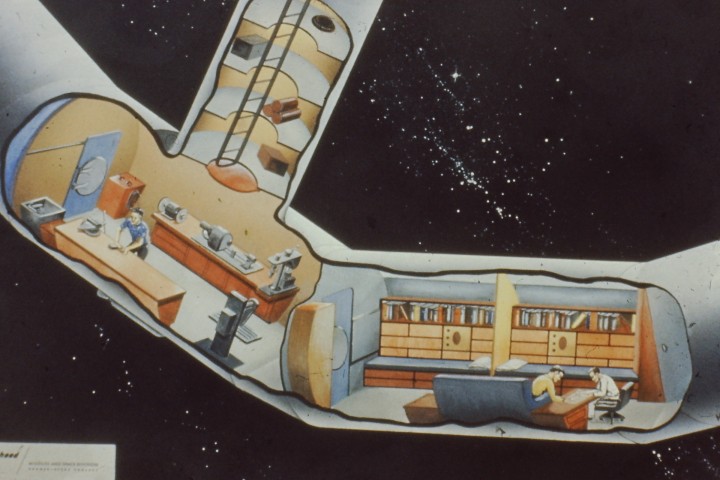Jul 242013
A closeup of part of the “wheel” of the early-60’s Lockheed space station concept. Via NASA history office.
A number of early rotating space stations used “wheels” like this, with straight cylindrical segments forming a torus. While this would be relatively easy to build, it would have the result that the flat floors would be “curved” from the standpoint of “gravity.” Things would roll “downhill” towards the joints between segments.
There are some definite head-scratchers in this.
- A whole lot of paper books, a pretty substantial library. Anyone who had ever picked up a box of books knows that paper is *heavy.*
- That’s a heck of a couch.
- With a small-minor-diameter torus like this, there’s no getting away from the fact that each compartment is going to have traffic through it. Still, it seems a dubious choice to put one of the main entryways into the torus in the machine shop. Anyone working in there is likely going to be effectively deaf, and possibly blind. Not to mention you’re going to have people wandering through a machine shop. This, I think, should be in a segments furthest from a “spoke” so that it gets less traffic… and nobody dropping in from above.
- Once you’ve dropped into the machine shop from the spoke… good luck getting back up to it.
- Don’t ask me to explain the rectangular doors with the circular doors built-in.
- Is that a pile of logs? Stocking up for those cold winter nights, perhaps?
